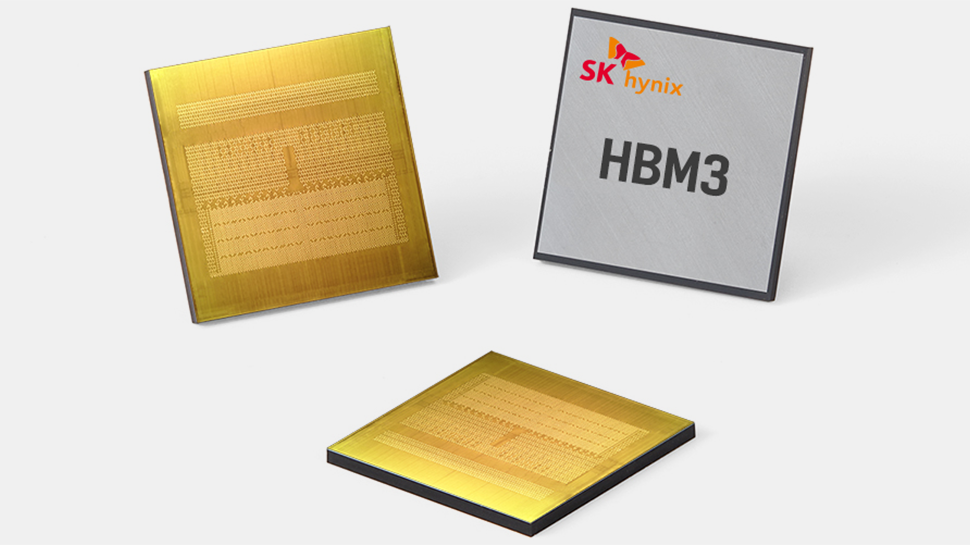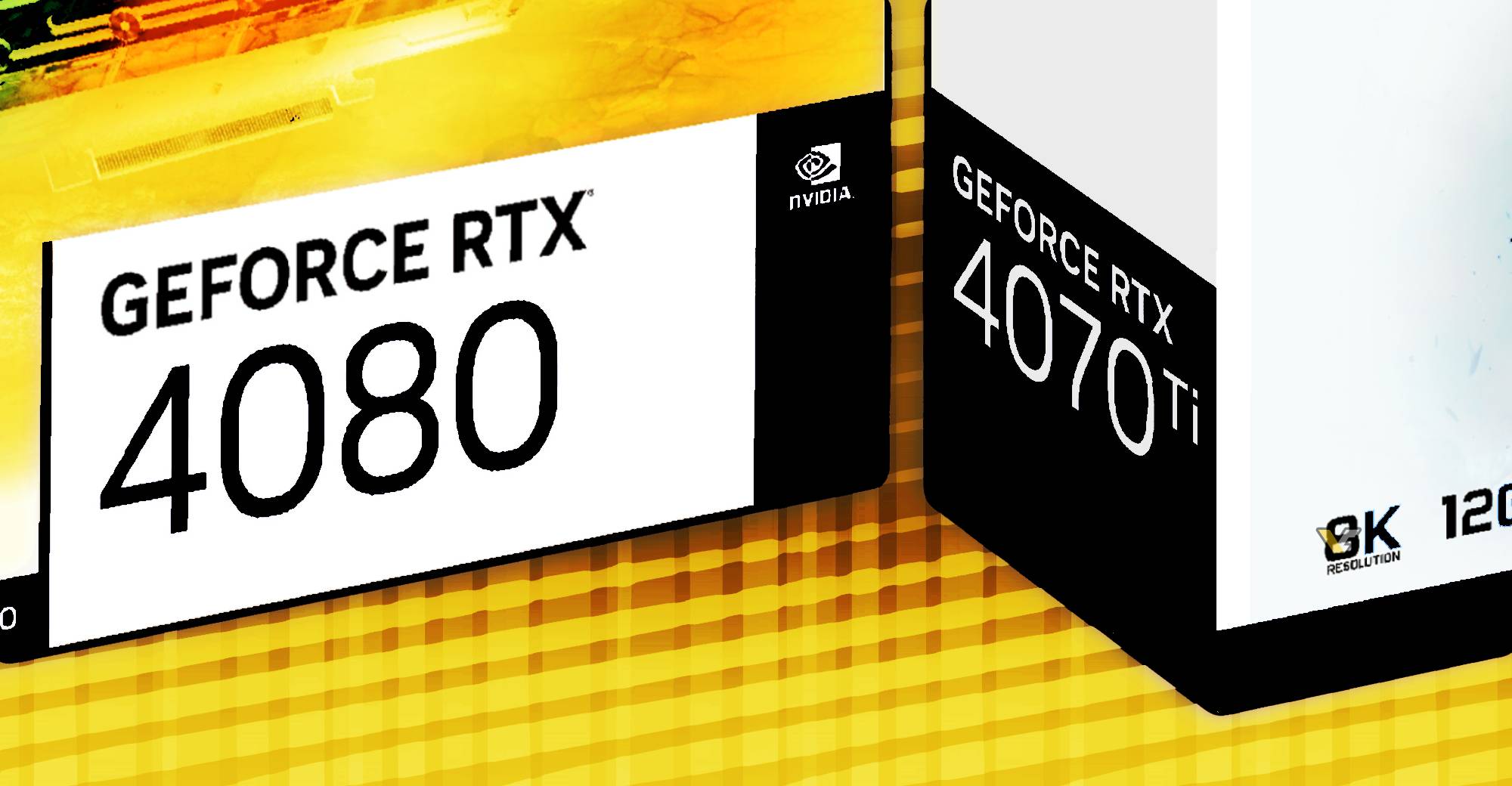I wonder if Nvidia will use 24 Gb modules so meaning they could in theory do a 30GB cut down 5090, full-fat 36GB 5090 Ti and a 72GB Quadro.
GB202 gets 384 bit G7 after all. If true 512 bit buses are to remain a rare thing in gaming GPUs.
Install the app
How to install the app on iOS
Follow along with the video below to see how to install our site as a web app on your home screen.
Note: This feature may not be available in some browsers.
You are using an out of date browser. It may not display this or other websites correctly.
You should upgrade or use an alternative browser.
You should upgrade or use an alternative browser.
- Status
- Not open for further replies.
DegustatoR
Legend
I doubt that we'll see VRAM size changes in the high end. 16+ GBs are well enough for now. It's the low end where bus widths are limiting memory sizes below a comfortable level.I wonder if Nvidia will use 24 Gb modules so meaning they could in theory do a 30GB cut down 5090, full-fat 36GB 5090 Ti and a 72GB Quadro.
Do we have figures of 8K gaming frame buffer VRAM usage?, im sure it’s alot but by how much compared to 4K frame buffers?, can we simply multiply 4K frame buffer size by 4 given that 8K is pushing exactly Four times the amount of 4K pixels or is it more complicated than that?I doubt that we'll see VRAM size changes in the high end. 16+ GBs are well enough for now. It's the low end where bus widths are limiting memory sizes below a comfortable level.
It's more complicated than that. Textures for example are certain resolution regardless of the rendering resolution, so they're more or less fixed cost.Do we have figures of 8K gaming frame buffer VRAM usage?, im sure it’s alot but by how much compared to 4K frame buffers?, can we simply multiply 4K frame buffer size by 4 given that 8K is pushing exactly Four times the amount of 4K pixels or is it more complicated than that?
DegustatoR
Legend
Frame buffer isn't the main consumer of VRAM these days and going from 4K to 8K while it does add some sizeable fixed cost in VRAM usage isn't really a problem for 16GB GPUs so there's no apparent need to go higher than that if you're aiming at 8K (which in itself is a very questionable target to aim at).Do we have figures of 8K gaming frame buffer VRAM usage?, im sure it’s alot but by how much compared to 4K frame buffers?, can we simply multiply 4K frame buffer size by 4 given that 8K is pushing exactly Four times the amount of 4K pixels or is it more complicated than that?
The answer to the question if we'll see high end going with more VRAM next gen will depend on how much these x1.5 capacity chips will cost. If it'll be x1.5 cost or less than it's possible. If it'll be more than x1.5 then there's no need really.
I believe Nvidia will market the 5090 as the definitive 8K gaming GPU, 4090 does 8K but it’s on case by case basis, so if they’re positioning the 5090 as their 8K card, that triggers the question whether we need more VRAM for 8K gaming or not. assuming it’s needed for 8K and lots of gamers prefer 4K with higher framerates (myself included), then Nvidia might release two 5090 SKUs (one with more memory) like they did with many GPUs before.Frame buffer isn't the main consumer of VRAM these days and going from 4K to 8K while it does add some sizeable fixed cost in VRAM usage isn't really a problem for 16GB GPUs so there's no apparent need to go higher than that if you're aiming at 8K (which in itself is a very questionable target to aim at).
The answer to the question if we'll see high end going with more VRAM next gen will depend on how much these x1.5 capacity chips will cost. If it'll be x1.5 cost or less than it's possible. If it'll be more than x1.5 then there's no need really.
DegustatoR
Legend
Very much doubt that they will.I believe Nvidia will market the 5090 as the definitive 8K gaming GPU
Will Nvidia release 5 series for consumers in 2024 or 2025?
Perhaps the 5090 in 2024, and the rest of the lineup in 2025.
DegustatoR
Legend
Not going to happen.I’m hoping that the 50xx series is where RTX performance across the line is good enough to allow games to be built around RT only rendering.
I doubt that RT performance will ever be "good enough". On faster h/w you'll just get games which will shoot more rays for more things.
That and a slider for how many bounces per ray or something like that.Not going to happen.
I doubt that RT performance will ever be "good enough". On faster h/w you'll just get games which will shoot more rays for more things.
Silent_Buddha
Legend
That's a pretty awesome application for AI. It's kinda crazy that we're living through the AI revolution now which I honestly believe will make all previous revolutions with the possible exception of the agricultural pale in comparison.
For people of the generation that I think many here are, I.e. can remember a time before mobile phones, the Internet and WIFI, we are living through by far the most remarkable transition that has happened in the space of a human life time in all of human history.
How privileged are we!
Considering I grew up in a time before Personal computers existed that you could buy for your home, I have to feel that the home computing revolution trumps the AI revolution.
Regards,
SB

SK Hynix and Nvidia reportedly working on a radical GPU redesign that 3D-stacks HBM memory directly on top of the processing cores
SK Hynix is working with Nvidia, other logic designers on HBM4 integration.
SK Hynix has started recruiting design personnel for logic semiconductors, such as CPUs and GPUs, reports Joongang.co.kr. The company is apparently looking to stacking HBM4 directly on processors, which will not only change the way logic and memory devices are typically interconnected, but will also change the way they are made. In fact, if SK Hynix succeeds, this may largely change how the foundry industry works.
D
Deleted member 2197
Guest

Board partners expect to clear remaining inventory of RTX 4080/4070Ti before RTX 40 SUPER launch - VideoCardz.com
NVIDIA board partners expecting RTX4080/4070Ti inventory to be depleted in December at latest There is a new report from Board Channels, which is quoting their sources from various AIC (Add-in-Card) brands working with NVIDIA on the current situation in the high-end RTX 40 product status. The...
Q3 FY24 financial results with the general trend of "number go up even more". 3x revenue y/y and 13.5x GAAP/7x non-GAAP net income y/y isn't a bad result all things considered

 nvidianews.nvidia.com
nvidianews.nvidia.com
DC about 5x gaming revenue, DC + gaming is 95.87% of Nvidia's total revenue
Q2 FY24 for comparison https://nvidianews.nvidia.com/news/nvidia-announces-financial-results-for-second-quarter-fiscal-2024

NVIDIA Announces Financial Results for Third Quarter Fiscal 2024
NVIDIA (NASDAQ: NVDA) today reported revenue for the third quarter ended October 29, 2023, of $18.12 billion, up 206% from a year ago and up 34% from the previous quarter.
| GAAP | |||||
| ($ in millions, except earnings per share) | Q3 FY24 | Q2 FY24 | Q3 FY23 | Q/Q | Y/Y |
| Revenue | $18,120 | $13,507 | $5,931 | Up 34% | Up 206% |
| Gross margin | 74.0% | 70.1% | 53.6% | Up 3.9 pts | Up 20.4 pts |
| Operating expenses | $2,983 | $2,662 | $2,576 | Up 12% | Up 16% |
| Operating income | $10,417 | $6,800 | $601 | Up 53% | Up 1,633% |
| Net income | $9,243 | $6,188 | $680 | Up 49% | Up 1,259% |
| Diluted earnings per share | $3.71 | $2.48 | $0.27 | Up 50% | Up 1,274% |
| Non-GAAP | |||||
| ($ in millions, except earnings per share) | Q3 FY24 | Q2 FY24 | Q3 FY23 | Q/Q | Y/Y |
| Revenue | $18,120 | $13,507 | $5,931 | Up 34% | Up 206% |
| Gross margin | 75.0% | 71.2% | 56.1% | Up 3.8 pts | Up 18.9 pts |
| Operating expenses | $2,026 | $1,838 | $1,793 | Up 10% | Up 13% |
| Operating income | $11,557 | $7,776 | $1,536 | Up 49% | Up 652% |
| Net income | $10,020 | $6,740 | $1,456 | Up 49% | Up 588% |
| Diluted earnings per share | $4.02 | $2.70 | $0.58 | Up 49% | Up 593% |
Data Center Third-quarter revenue was a record $14.51 billion, up 41% from the previous quarter and up 279% from a year ago.
Gaming
Third-quarter revenue was $2.86 billion, up 15% from the previous quarter and up 81% from a year ago.
DC about 5x gaming revenue, DC + gaming is 95.87% of Nvidia's total revenue
Q2 FY24 for comparison https://nvidianews.nvidia.com/news/nvidia-announces-financial-results-for-second-quarter-fiscal-2024
DegustatoR
Legend
Their GPUs are the basis for all of their revenue and margins. They don't sell anything else.Nvidia could give away their GPU and still have obscene margins
And if you mean just GeForces then sure they can do it, and then they'll just stop making them altogether because the only point in making any product is in getting profits from it.
Insane numbers but unsustainable long term. Once the datacenters are full of AI hardware they’ll go back to normal upgrade cycles. Only question is how long will it take to get there. Nvidia’s best chance at sustaining this sort of revenue is to get into the AI cloud services game. Hardware alone won’t do it.
- Status
- Not open for further replies.
Similar threads
- Replies
- 0
- Views
- 397
- Replies
- 84
- Views
- 6K
- Replies
- 375
- Views
- 28K
- Locked
- Replies
- 260
- Views
- 22K
